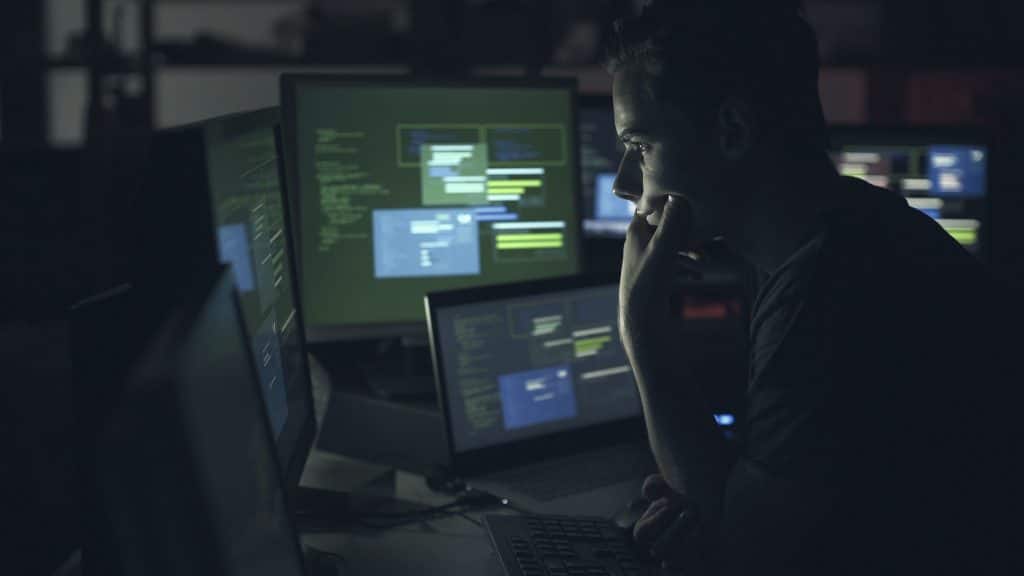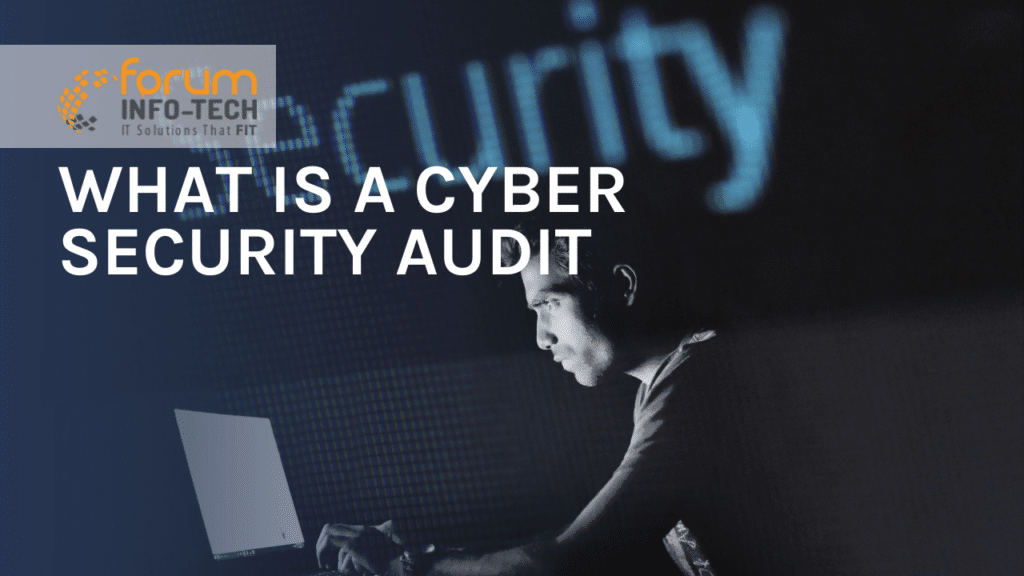With huge reliance on data and online platforms, cyberattacks are among the most rapidly increasing crimes worldwide. By 2021, around $6USD trillion is expected to be the damages caused by cybercrime globally—industries must recognize tech and digital security breaches as significant risks to their businesses.
Users have grown progressively worried about their data security and now want to be ensured that all their information will remain secure and safe.
With that, any firm, business, or organization needs to regularly check its IT infrastructure that supports cybersecurity and data protection.
What is cybersecurity?
Cybersecurity refers to protecting data that belongs to an individual or an organization. Cybersecurity includes network security, application security, informational security, and much more. In an organization, however, there are primarily three levels of digital or IT security:
- Informational security
- Cybersecurity
- Network security
Cybersecurity keeps your data secure from malicious attacks. With cybercrimes and cyberattacks increasing each year, it is vital to have a proper infrastructure to facilitate cybersecurity.
Overlooking the threat that cybercrimes and cyberattacks pose isn’t possible nowadays. Every industry is vulnerable to data breaches and cyberattacks; however, the level of vulnerability still varies from industry to industry. Industries with more clients or sensitive data are more likely to be potential victims of such cyberattacks. These may include financial and banking sectors, pharmaceuticals, and energy departments, etc.
Cybersecurity is a vast topic but is not our focus for this article. In this article, we will explore what auditing cybersecurity is and why it is crucial.
What is a cybersecurity audit?
A cybersecurity audit refers to the check and evaluation of systems and controls in place for data protection. Through cybersecurity audits, an organization can measure the efficiency and effectiveness of these systems.
There are many reasons and factors why an organization should conduct regular cybersecurity audits. Some of these are:
- To regularly monitor the organization’s IT infrastructure and systems to detect any potential risks or defects.
- To check if the systems comply with the compliance guidelines, meet the minimum requirements, and mitigate their expected risks.
- Cyber threats are constantly evolving. If regular audits aren’t conducted, you are waiting for threats.
- Develop “best practice” recommendation.
- Evaluate across all departments to improve overall security compliance and risk management.
- Assess and analyze potential exposures and failures.
- Evaluate the efficiency, effectiveness, and compliance of the operational processes.
- Inspect financial, information systems, security controls, and management procedures.
- Identify and analyze any weaknesses in the current cybersecurity plan and protection.
- Identify any need for hiring or training the staff.
- Adjust budget requirements according to the new IT infrastructure, if any.
- Form contingency plans to counter emergency cyberattacks or vulnerable situations.
Besides checking for IT infrastructures, cybersecurity audits also include reviewing and interviewing individuals responsible for their security, data protection, and IT infrastructures.
As time passes by and the environment evolves, the preconditions to the vulnerabilities would also change, which is worth noting for a cyber-security auditor. Firms need to be mindful of every regulatory amendment, including court proceedings affecting anonymity, cybersecurity, compliance procedures, and the consequences of companies who’ve already suffered a cyber-attack.

Ways to conduct a cybersecurity audit
There are many ways in which you can conduct a cybersecurity audit for your organization. You can either choose an external audit team or an internal audit team.
External Audit: External auditors are hired through an auditing firm. These are professionals who are highly skilled at their work. These auditors possess all the expertise required to conduct a thorough audit for your organization’s cybersecurity.
These auditors might also use vulnerability detectors to find loopholes in your cybersecurity structure or any potential risks. If you want a thorough and in-depth check of your cybersecurity, external auditors should be your choice. However, these auditors can cost a lot due to their vast amount of knowledge and experience.
Internal Audit: Internal auditors are company employees. These auditors are less costly but aren’t as skilled as external auditors. Even though managing an internal auditor is way easier than an external auditor, internal auditors might lack the market knowledge required to conduct thorough checks and balances.
An internal auditor is usually well versed with company rules, regulations, and structures and doesn’t take very long to understand what is being asked. Depending on your organization’s budget, size, and audit requirement, you can choose which auditor is better for your company’s cybersecurity audit.

Steps to conduct a cybersecurity audit
An organization’s number of steps to conduct a cybersecurity audit also depends on factors like budget, size of the organization, and the audit’s depth. To put it simply, the following are the steps that are usually followed when conducting a cybersecurity audit for an organization.
- Review security policy
- Identify priorities of the audit and potential risks
- Review the already existing cybersecurity plan and infrastructure
- Check the plan against the security standards
- Make a list of changes, loopholes, and security personnel responsibilities
Review security policy
Every organization has a set of rules for accessing and handling data. Not all employees are allowed the same sort of access to the company data. Thus, it is essential to review the confidentiality and privacy policies before conducting a cybersecurity audit.
Identify priorities of the audit and potential risks
Before starting the cybersecurity audit, all the assets that will be audited must be identified. If an organization aims to audit computers first and then software, it should rank its assets according to priority to make it easier for the auditor.
Sometimes the main reason to conduct a cybersecurity audit is that some cyber threat has been identified. Thus, aligning both priorities and risks before conducting the audit renders it easy and efficient for the auditor to fulfill the task.
Review the already existing cybersecurity plan and infrastructure
Once the potential threats, risks, and priorities of the project are identified, it is ideal for checking the current cybersecurity policy. Through analyzing this, you can determine if your organization is equipped for the potential threats and how effective the existing infrastructure is. You can also identify the area of loopholes and the areas that require assistance.
Check the plan against the security standards
While reviewing the cybersecurity plan and infrastructure, you should also compare it to the ideal version. Checking if your IT infrastructure supports cybersecurity that meets both industry and global standards is essential.
With firms handling lots of sensitive client and employee data, they must meet the standards that ensure cybersecurity stakeholders. It is essential to know the compliance regulations that are relevant and applicable to your firm before this step is carried out.
Make a list of changes, loopholes, and security personnel responsibilities
After thorough checks, the identified issues and loopholes should be dealt with. If there are any severe or urgent cyber threats, the right person should be aware of the plan of action to deal with them, and the IT infrastructure should work to counter them. If the current cybersecurity structure doesn’t meet the industry and global standards, making it safer should be penned down and worked on.
Understanding and working on the observations made during the audit at each step of the process is essential. At this point, new methods might need to be implemented, and older methods might need to be shut down or adjusted. Executing this could lead to organizational restructuring or more time requirements.
Even after the audit is performed and all the risk-weighted vulnerabilities are classified, the organization might need to evaluate the financial cost associated with making the necessary changes to keep the organization profitable and sustaining to stay on par with the required guidelines.
After all this, a finalized and updated cybersecurity plan can be shared with the organization’s relevant staff. However, this plan should be actionable and should still ensure regular audits for any required updates.

Why is cybersecurity important?
Businesses are dependent on the internet more than ever. There are now clusters of networks that are highly dependent on each other, and a single high-risk vulnerability can collapse the delicate web of connections, and this failure at any point can be financially damaging.
It’s not always certain the end from which a cyber-attack can come from. It is possible from both within and outside of an organization. Every scalable organization has specific essential data like client and employee data. The ever-lurking threat of cyber-attack could lead to financial loss, loss of trust among the clients, and damage to the organization’s reputation.
A private, unbiased, and expert investigation is necessary to assess the complete cyber-security standing and strength of any organization’s program. This audit evaluates the present state of cybersecurity and checks if the security environment’s maturity is at par with the global benchmark.
All the incidents of cybersecurity should be relayed and addressed immediately. They should be addressed as any other issue related to the business of the firm. Here are some things to keep in mind that can help with cybersecurity audits:
- Interview the right personnel
- Build an emergency team
- Regularly audit your company’s cybersecurity plan
- Implement more active and effective monitoring
Interview the right personnel
During the audit, the cybersecurity team should be interviewed to understand a gap between the team and ground realities; there could be potential vulnerabilities. After consolidating the report and understanding the risks, the audit team should bring the right third-party resource for implementation and resolve the threats.
Build an emergency team
When correctly built, an emergency management unit can meet the company’s needs in an emergency. A team can be created that includes partners and leaders of the company. Furthermore, in every risk mitigation dimension, a well-built program is the best way to counter any cybersecurity attack or threat.
Regularly audit your company’s cybersecurity plan
It is important to remember that cybersecurity threats are ever-evolving and can cause significant damage if not audited and dealt with regularly. Pinpoint the threats and pay special attention to the ones that are often the most severe.
Implement more active and effective monitoring
When a company has a good understanding of the threats, it will use the resources to help manage the dangerous areas. Moreover, best practices require that an institution’s network security is assessed regularly and thoroughly.

How to perform cybersecurity risk assessment through scoring?
The risk scoring methods, tools, and procedures must be in the right combination. These scoring points’ compounding results can indicate how accurate the risk calculation for each asset audit is. These scoring points can help identify the potential threats and means to exploit these threats to reduce an adverse event’s odds.
The weak and vulnerable controls could be related to hardware, software, or some combination of both the company guidelines and the human element involved in cybersecurity implementation. User education, fool-proofing of the interface, and authentication methods also aid in the security tightening and improvement in cybersecurity.
The scoring standard does not stay static as a practice; they change from industry to industry and time to time. As the clients’ expectations evolve and more technical, elaborate solutions present themselves, newer vulnerabilities and threats also occur. The risk signals should all be compiled and be evaluated against the related controls in place to measure and compare the risks and means to minimize those risks.
This scoring technique could be integrated with more security management platforms and programs to match any gaps left behind in the initial evaluation and make the process of cybersecurity more efficient. As in the future, more such events occur and vulnerabilities arise, an integrated application can help keep control.

Final Thoughts
To conclude, it can easily be said that cybersecurity audits aren’t a one-time process. These audits should be an ongoing process for any organization to keep up with the ever-evolving cybersecurity threats. These audits are critical to secure any organization’s digital assets and continually help improve the IT infrastructure and technology to keep up with the required standards.
Cyber attackers usually trade an organization’s sensitive information for money, and that is why such cyberattacks can be very financially stressful for any organization. It is important to note that if your firm carries and stores lots of important data, solid protocols and regular audits should avoid such instances and strengthen your firm’s cybersecurity framework. Regular audits play a significant role in improving an organization’s cybersecurity, as through these audits, it is easier to pinpoint areas of potential threats and improvements.
If regular check balances and audits occur, your organization will not only comply with the required standards. It will also build trust both internally with its employees and externally with other stakeholders and clients.

